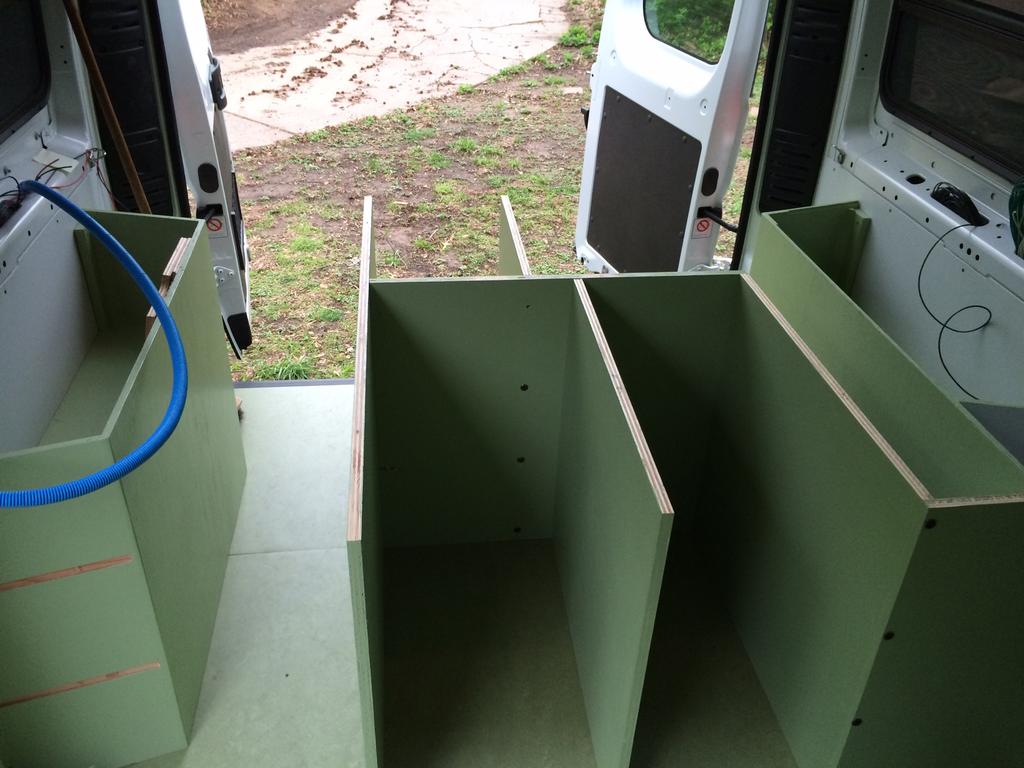So, so many videos on YouTube show people gluing Reflectix to every exterior and some interior surfaces of their van. No, this is not the way I'm going. It doesn't make sense for many, many reasons. To try and convince me otherwise is a complete waste of time.
Moving on... For the foreseeable future, I will be in a cold climate. Where I'm based I can expect winter temperatures down to -30°C [-22°F] or so, but cold like this is rare and doesn't usually last for more than a week or two at most. Average/typical is more like -10°C to -15°C [14°F to 41°F]. But I think you'll agree that with these temperatures heat and insulation is important if you want to be comfortable. Summer will be more of a challenge. Average "hot" sits around 25°C to 35°C [77°F to 95°F] and I don't tolerate heat well. I don't intend on spending a lot of time inside when the sun is beating down on the van's exterior.
I've also seen lots of people shoving insulation batts into every possible nook and cranny of their rather complex sidewalls and ceiling structures. I don't think I want to do this either, both from an insulation efficiency standpoint, and the time and effort involved. What's left? Well...
I'm thinking that I can tolerate some lost space on the inside to make things easier and possibly better. I'm thinking to basically build an insulated box inside the van. There would be a few ways to accomplish this. First would be to build and attach the insulated floor, then a semi-structural insulated ceiling, then build flat insulated structural walls that attach between the floor and ceiling. The wall between the cargo area and cab will also be insulated to the same extent. The order could be changed around a bit to accommodate different building techniques. One benefit that I see is that there would be free-flow of air around the van's metal interior panels. This should keep mold and moisture from building up without anywhere to go.
This could be done with a variety of materials, but I was thinking to focus on expanded polystyrene board (and/or poly-iso), softwood lumber, and/or plywood. This envelope would be just about air tight, so I'd also be planning to build in a small heat recovery ventilator (air exchanger) in addition to the vented propane furnace that would supply heat.
The thing is, I haven't seen anyone do this. Why not? It's been making a lot of sense to me.
Moving on... For the foreseeable future, I will be in a cold climate. Where I'm based I can expect winter temperatures down to -30°C [-22°F] or so, but cold like this is rare and doesn't usually last for more than a week or two at most. Average/typical is more like -10°C to -15°C [14°F to 41°F]. But I think you'll agree that with these temperatures heat and insulation is important if you want to be comfortable. Summer will be more of a challenge. Average "hot" sits around 25°C to 35°C [77°F to 95°F] and I don't tolerate heat well. I don't intend on spending a lot of time inside when the sun is beating down on the van's exterior.
I've also seen lots of people shoving insulation batts into every possible nook and cranny of their rather complex sidewalls and ceiling structures. I don't think I want to do this either, both from an insulation efficiency standpoint, and the time and effort involved. What's left? Well...
I'm thinking that I can tolerate some lost space on the inside to make things easier and possibly better. I'm thinking to basically build an insulated box inside the van. There would be a few ways to accomplish this. First would be to build and attach the insulated floor, then a semi-structural insulated ceiling, then build flat insulated structural walls that attach between the floor and ceiling. The wall between the cargo area and cab will also be insulated to the same extent. The order could be changed around a bit to accommodate different building techniques. One benefit that I see is that there would be free-flow of air around the van's metal interior panels. This should keep mold and moisture from building up without anywhere to go.
This could be done with a variety of materials, but I was thinking to focus on expanded polystyrene board (and/or poly-iso), softwood lumber, and/or plywood. This envelope would be just about air tight, so I'd also be planning to build in a small heat recovery ventilator (air exchanger) in addition to the vented propane furnace that would supply heat.
The thing is, I haven't seen anyone do this. Why not? It's been making a lot of sense to me.

















